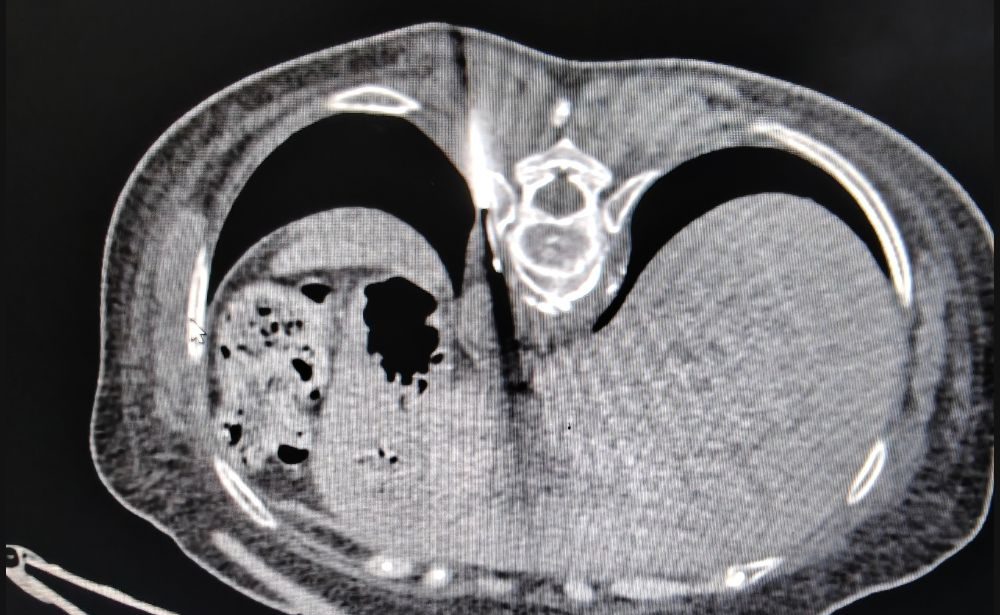Understanding Basic Non-Vascular Procedures
At the core of modern diagnostics and treatment are minimally invasive, image-guided techniques. As an expert Interventional Radiologist, Dr. Akash Bansal uses real-time ultrasound (USG) and computed tomography (CT) to guide fine needles and catheters with pinpoint accuracy. This approach allows for highly effective biopsies and drainage procedures with minimal pain, no surgical scars, and a rapid recovery, enabling you to return to your life quickly.
Our Key Procedures
1. USG/CT Guided FNAC & Biopsies
What it is: A procedure to obtain cells or a small tissue sample from a suspicious area in your body (such as a lump, organ, or tumor) for laboratory analysis. This is the gold standard for diagnosing whether a growth is benign or cancerous.
How it helps: Provides a definitive diagnosis, which is crucial for planning the correct treatment. It is far less invasive than a surgical biopsy.
Commonly used for: Investigating lumps in the thyroid, breast, liver, lymph nodes, and other organs.
2. Pigtail Drainage of Collections and Abscesses
What it is: A procedure to drain unwanted fluid or pus (an abscess) from inside your body. A thin, flexible tube called a “pigtail catheter” is placed into the collection using imaging guidance.
How it helps: Relieves pain and pressure, treats or prevents infection, and allows the affected area to heal. It is a life-saving procedure for deep-seated infections.
Commonly used for: Draining abscesses in the liver, abdomen, or pelvis, and managing post-surgical fluid collections.
3. Ascitic & Pleural Tapping (Paracentesis & Thoracentesis)
What it is: A procedure to remove excess fluid that has accumulated in the abdominal cavity (ascites) or the space around the lungs (pleural effusion).
How it helps: Provides significant symptomatic relief from discomfort, bloating, and shortness of breath. The removed fluid can also be sent for analysis to determine the cause of the buildup.
Commonly used for: Managing fluid buildup due to liver disease, heart failure, cancer, or infection
Why Choose Dr. Akash Bansal for Your Procedure?
Pinpoint Accuracy: Advanced imaging guidance ensures the needle goes exactly where needed, maximizing success and safety.
Minimally Invasive Approach: Performed through a tiny needle puncture, avoiding large incisions, general anesthesia, and significant scarring.
Rapid Recovery & Comfort: Most procedures are done on an outpatient basis, allowing you to go home the same day with minimal downtime.
Expert Interpretation: As a trained Radiologist, Dr. Bansal can immediately interpret the imaging findings in conjunction with the procedure.
Frequently asked questions
Most basic non-vascular procedures are quick, typically taking between 20 to 45 minutes to complete, depending on the complexity and location.
Yes, for most of these procedures, you will be awake. We use local anesthesia to numb the skin and deeper tissues, ensuring you feel minimal discomfort. You might be given a mild sedative to help you relax.
These procedures involve minimal downtime. You will be monitored for a short period (a few hours) after the procedure. Most patients can resume their normal activities within 1-2 days, though we advise avoiding strenuous exercise for a short time.
Yes, they are considered very safe. Because they are minimally invasive, the risks of bleeding, infection, and damage to surrounding tissues are significantly lower compared to traditional surgery. Dr. Bansal will discuss all potential risks with you beforehand.
The tissue or fluid sample obtained is sent to a pathology laboratory for analysis. This process usually takes a few days. Dr. Bansal or his team will communicate the results to you and your referring doctor, who will then discuss the next steps in your treatment plan.


